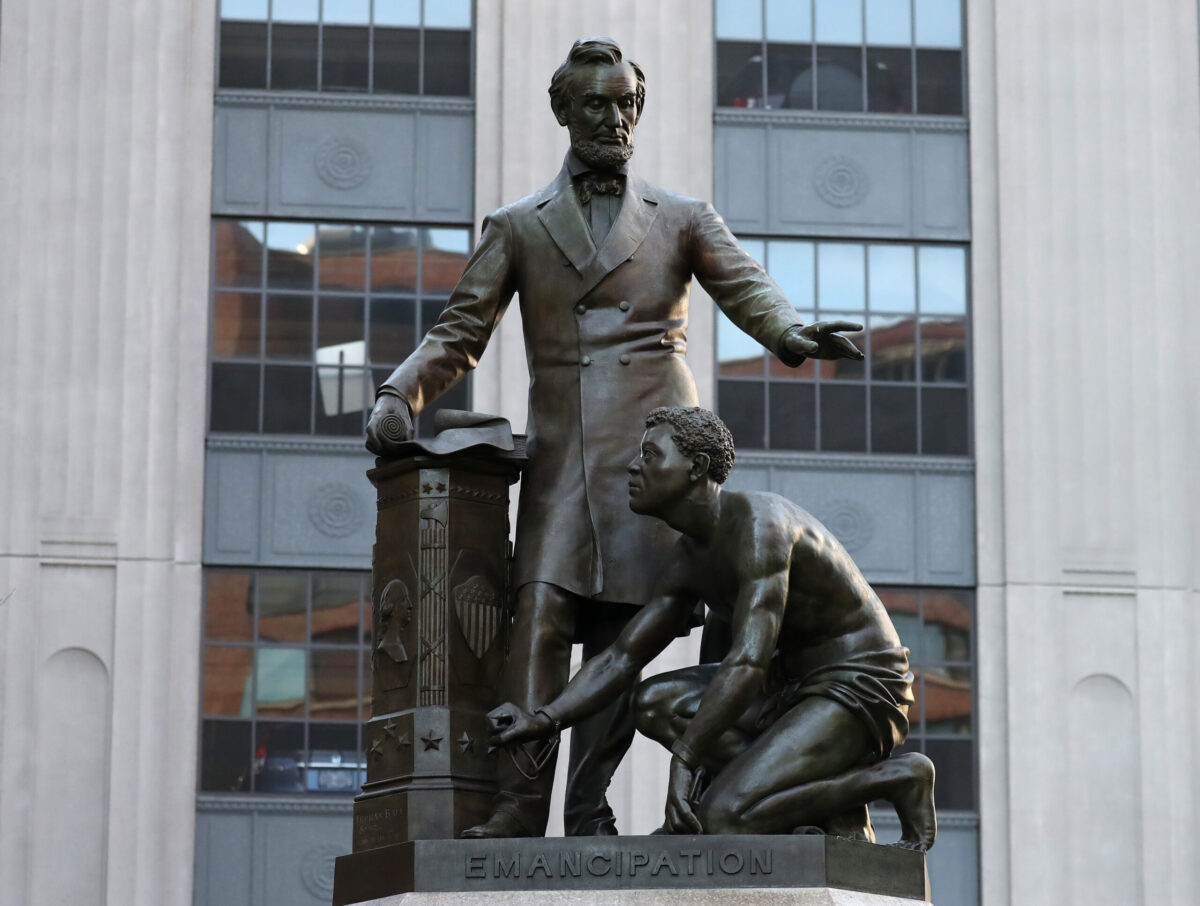As 2020 winds down in its final week, this past Tuesday the controversial statue of President Abraham Lincoln standing over a kneeling Black man was removed in Park Square in Boston, Massachusetts 141 years after it was erected.
The statue depicts a fully clothed and upright Lincoln— one hand on a copy of the Emancipation Proclamation and one hand hovering over a shirtless and crouching Black man— modeled after Archer Alexander, the last man captured under the Fugitive Slave Act.
Initiated by the Emancipation Group shortly after Lincoln’s assassination, the project was financed entirely by Black Americans, many of whom were formerly enslaved. The group had no say in the design, however. That distinction, notes the Washington Post, went to an all-white committee and the sculptor, Thomas Ball, who was also white.
The controversial Emancipation Group statue in Boston has been taken down. In June, an online petition called for the statue's removal and in July, the Boston Art Commission voted unanimously to take it down. |
Read the full story –> https://t.co/CboKT9WdzN pic.twitter.com/8W6yn2Uh4f— Boston 25 News (@boston25) December 29, 2020
The Boston statue, which is a replica of the one still standing in the nation’s capital, came under increased scrutiny this past summer in light of nationwide demonstrations protesting police brutality and the killing of George Floyd and Breonna Taylor.
Tory Bullock, a Boston area actor and activist, started the petition for removal in June writing, “I’ve been watching this man on his knees since I was a kid. It’s supposed to represent freedom but instead represents us still beneath someone else. I would always ask myself ‘If he’s free why is he still on his knees?’”
Both the Boston and D.C. statues have long been marked for censure.
Famed abolitionist Frederick Douglass, the keynote speaker at the 1876 unveiling of the D.C. statue, spoke in polite platitudes in regards to Ball’s work, but by all accounts, Douglass was insulted by the seemingly supplicating Black figure.
In a recently rediscovered letter written to the editor of the National Republican newspaper just days after the unveiling, Douglass wrote, “The negro here, though rising, is still on his knees and nude. What I want to see before I die is a monument representing the negro, not couchant on his knees like a four-footed animal, but erect on his feet like a man.”
Another critique of the statue published in the Harvard Library concurred with Douglass, reading, “One can view the freedman, with his nudity and kneeling position, as bereft of his dignity and agency, and, contrastingly, the fully clothed Lincoln, with his hand extending over him, as a demonstration of white mastery and supremacy.”
The Boston statue, according to a spokesperson for Boston Mayor Marty Walsh, will not be destroyed, rather relocated where “its history and context can be better explained.”
As to where the final resting place of the statue should be, members of the public can submit their suggestions here.





